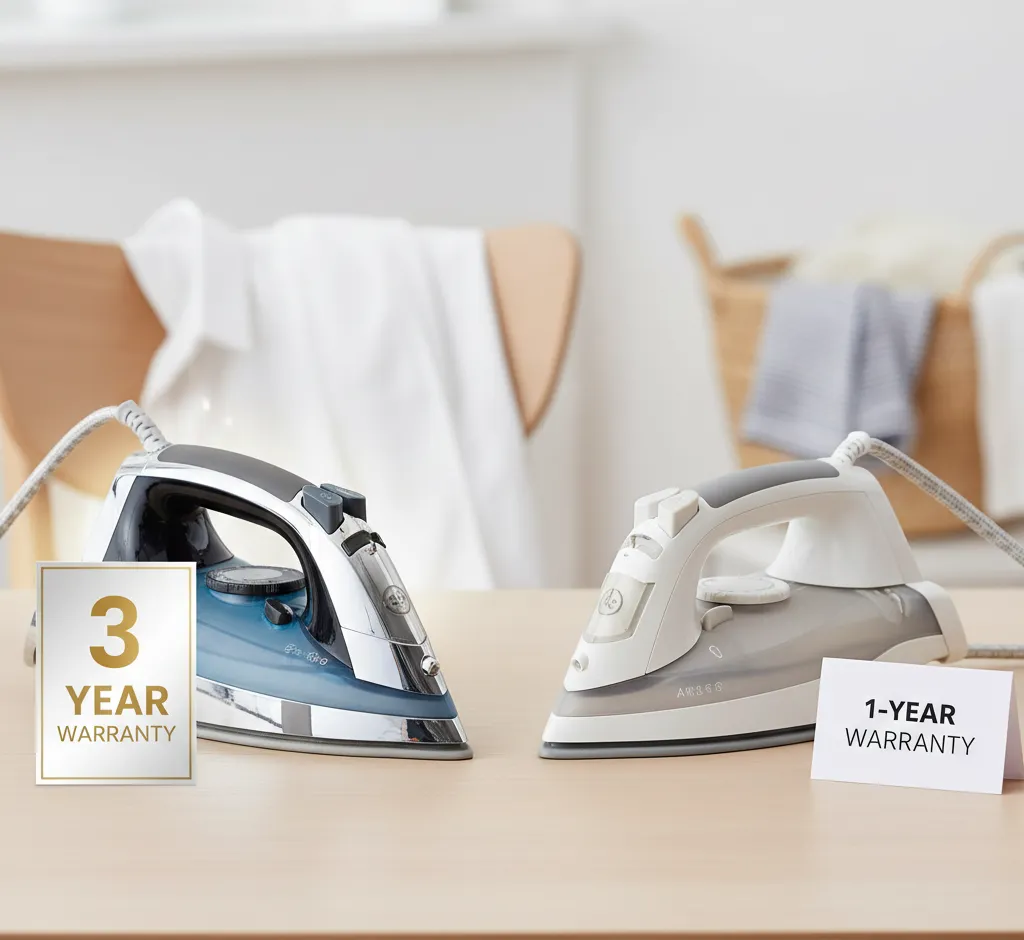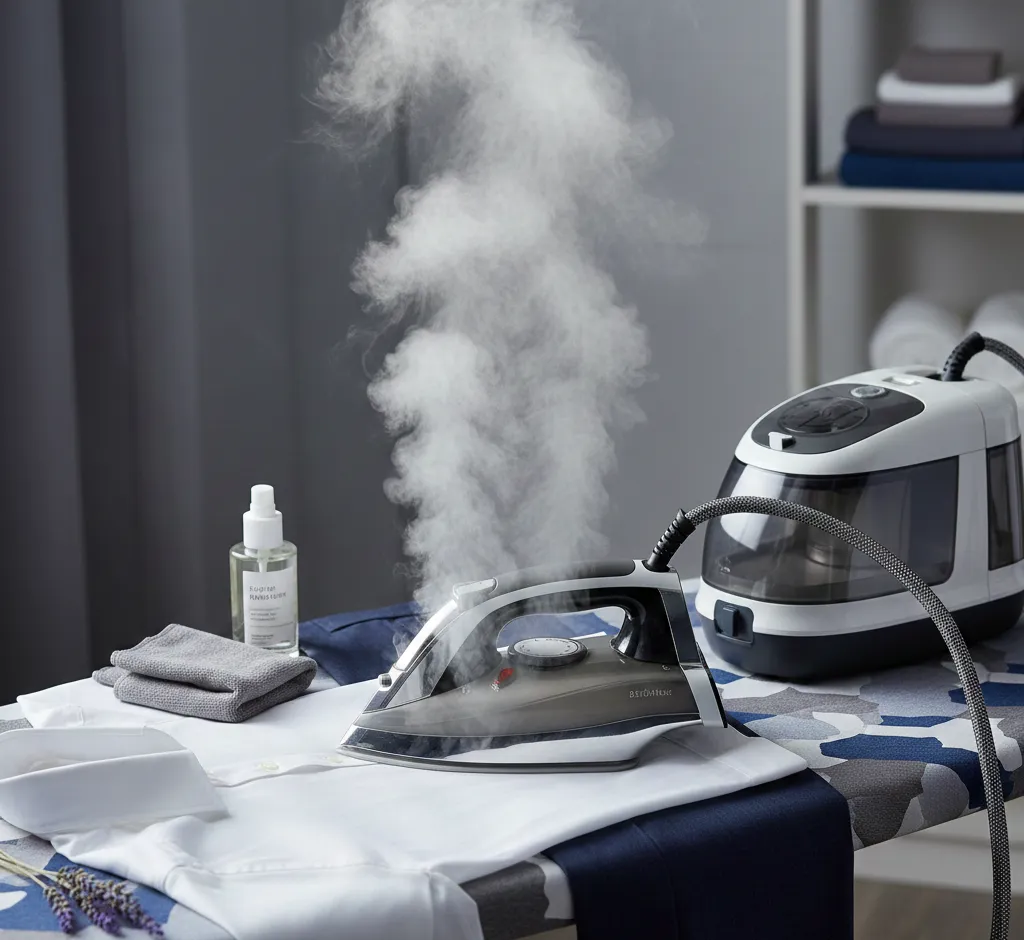The True Measure of Durability: How Steam Iron Warranty Length Reflects Product Quality
Discover how the length of a steam iron's warranty (1-year vs. 3-year) acts as a critical indicator of its underlying quality, component durability, and manufacturer confidence. Learn to decode the fine print and make a long-lasting purchase.

Introduction: Why Warranty Isn't Just a Piece of Paper
When you're shopping for a new steam iron, you're likely focused on features like steam output, soleplate material, and wattage. While these specifications are crucial, there's one often-overlooked detail that offers the most revealing insight into the iron's long-term quality and the manufacturer's confidence in their product: the warranty length.
A warranty is more than just a promise of repair; it's a financial and operational commitment made by the company. The longer and more comprehensive the warranty, the stronger the signal that the iron is built with superior components, subjected to rigorous testing, and designed for genuine longevity. In this article, we delve into the fundamental link between an iron’s warranty period and its inherent quality, helping you make a smarter, more durable purchase.
The Economics of Durability: Why Manufacturers Offer Longer Warranties
For a manufacturer, every warranty claim is a cost—labor, parts, shipping, and potential loss of goodwill. A company that offers a short 1-year warranty is effectively saying, "We're confident this product will last one year, and after that, the risk is yours." Conversely, a brand that backs its steam iron with a 3-year or even a 5-year warranty is making a calculated bet on the product’s reliability.
- Component Quality: Premium materials like stainless steel soleplates or robust heating elements translate directly to fewer failures.
- Design & Engineering: Irons with features designed to mitigate common failure points (e.g., self-cleaning systems to prevent mineral buildup) are safer to guarantee for longer periods.
- Testing & Quality Control: Extensive stress-testing during the manufacturing process reduces the probability of 'early life' failures, making a longer guarantee economically viable.
The Tiers of Warranty: Decoding What Different Lengths Mean
Warranties typically fall into three broad categories, each reflecting a different level of quality and manufacturer commitment:
- The Standard 1-Year Warranty: This is the bare minimum, covering manufacturing defects. It suggests the iron is a budget-friendly model where cost-saving measures likely took precedence over long-term component durability. It's often the domain of entry-level and generic models.
- The Premium 2-Year Warranty: This is the first significant step up. A 2-year warranty often indicates a mid-range iron with better construction, like a more durable ceramic or higher-grade aluminum soleplate, and a commitment to surviving typical wear and tear beyond the first year. It signals a move toward quality and away from disposable design.
- The Exceptional 3- to 5-Year Warranty: This is the gold standard for high-end, professional, and commercial-grade steam irons. It is a powerful indicator of superior engineering, premium materials, and obsessive quality control. These irons often feature sophisticated technologies such as anti-drip systems, advanced calc-collection features, and high-efficiency steam generators, all built to withstand years of heavy use. A 5-year warranty is a rare and compelling endorsement of the iron's resilience.
Beyond the Years: What to Look for in the Fine Print
The length of the warranty is just the beginning. The terms and conditions—the fine print—are equally vital, especially regarding steam irons, which interact heavily with water and minerals.
Key Clauses to Vet:
When assessing a warranty, always ask:
- Does it cover the soleplate? Damage to the non-stick coating or issues with the heating element are common. A good warranty covers both.
- What about 'Use and Care'? Most warranties are void if you use non-recommended chemicals (like scented water) or if damage is caused by improper cleaning or mineral buildup from hard water. The best irons have warranties that accommodate the use of tap water while providing internal systems to manage the mineral residue.
- 'Replacement vs. Repair' Policy: Does the company promise a brand-new replacement for a failed unit, or do they only offer a repair service? A hassle-free replacement policy indicates strong customer service and deep confidence in their current product line.
The Quality Correlation: Case Studies in Steam Iron Design
The correlation between warranty and quality isn't theoretical; it's observable in the construction details of the irons themselves. Take, for example, the water tank. On a low-end iron with a 1-year guarantee, the tank might be a simple, non-removable plastic molding prone to leaks from thermal expansion. A premium iron with a 3-year guarantee will often feature a robust, reinforced, or even stainless steel water reservoir, often with a dedicated internal heating element separate from the soleplate, minimizing stress on the main components and ensuring long-term seal integrity.
In summary: A longer warranty is a manufacturer's declaration of superior TCO (Total Cost of Ownership). They've invested more in components and are willing to absorb a higher potential risk because they are genuinely confident that their steam iron will outperform and outlast its cheaper, shorter-guaranteed counterparts. Investing in an iron with a robust, multi-year warranty is, therefore, one of the most reliable ways to guarantee a durable, high-quality appliance for your home.


